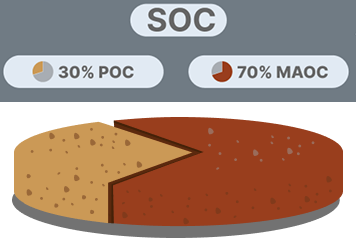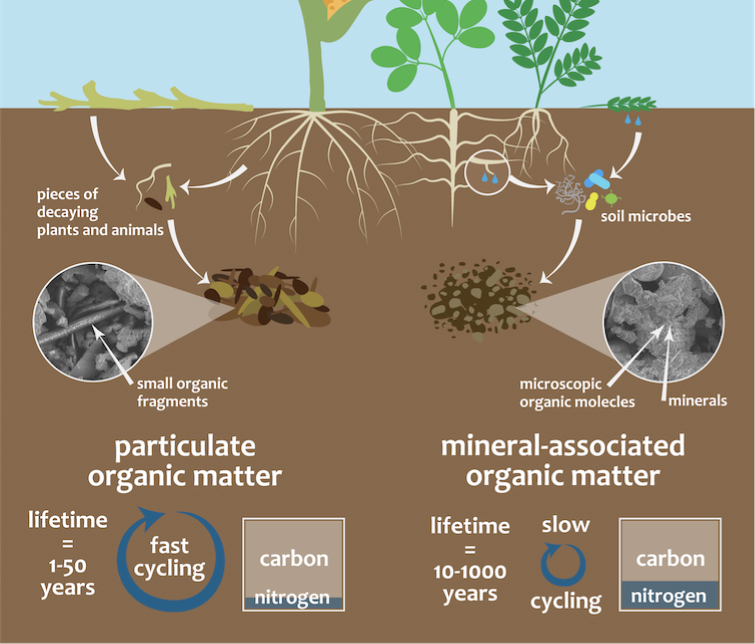MAOC forms when Dissolved Organic Carbon (DOC) binds to exposed mineral surfaces, particularly clay, with strong covalent bonds.
Mycorrhizae support and accelerate this process. Under the right conditions – high DOC concentration, sufficient nitrogen availability, clay surface area and the presence of mycorrhizal fungi – MAOC formation can occur within months. In cropland soils, mycorrhizal fungi facilitate sequestration of up to 2.85–4.93 tCO₂e per acre per year, most of it in the form of MAOC.






